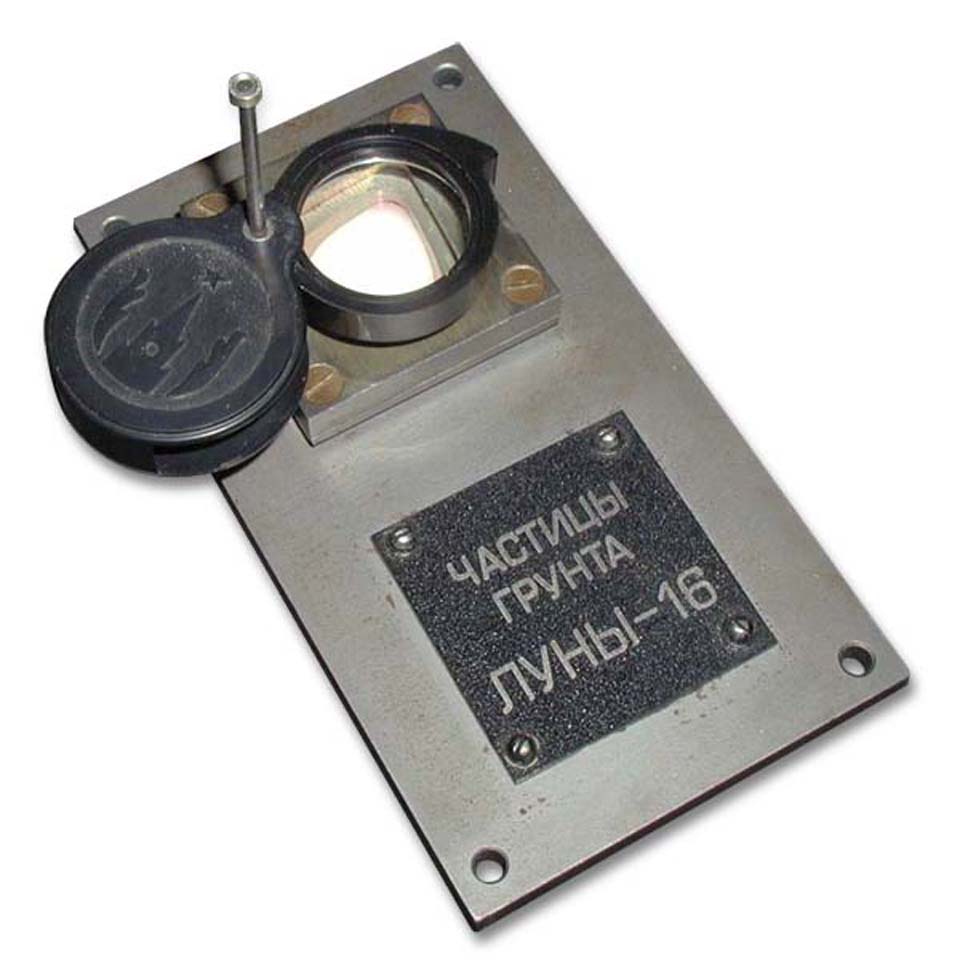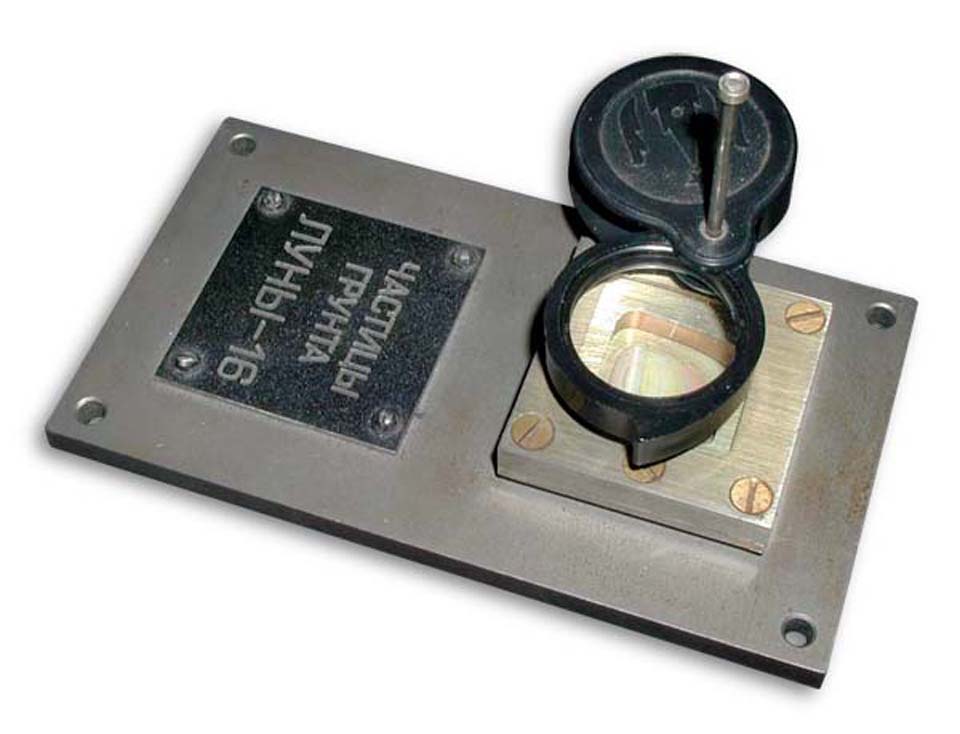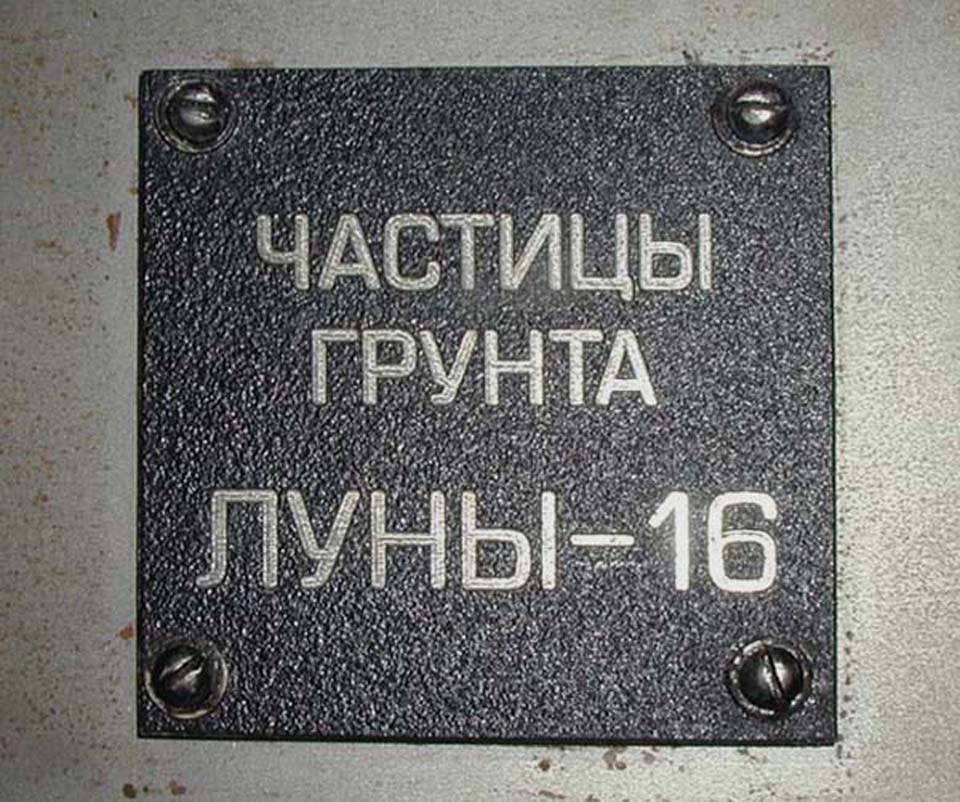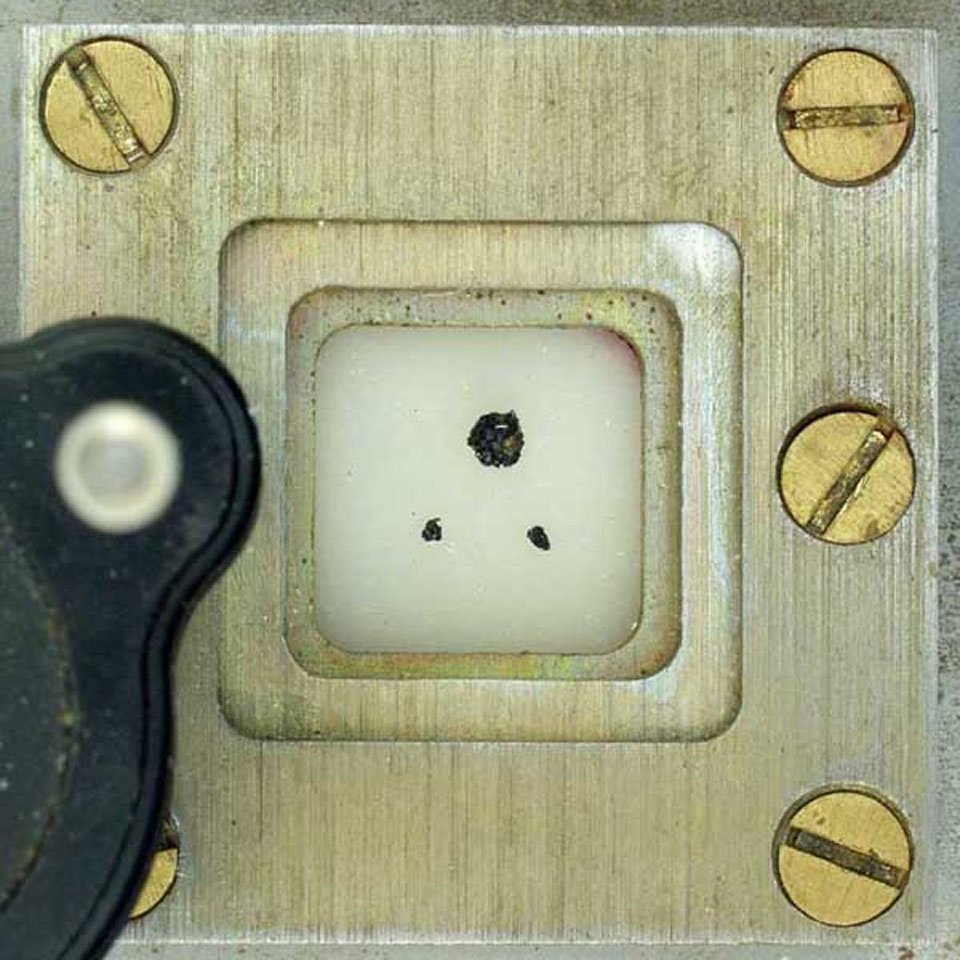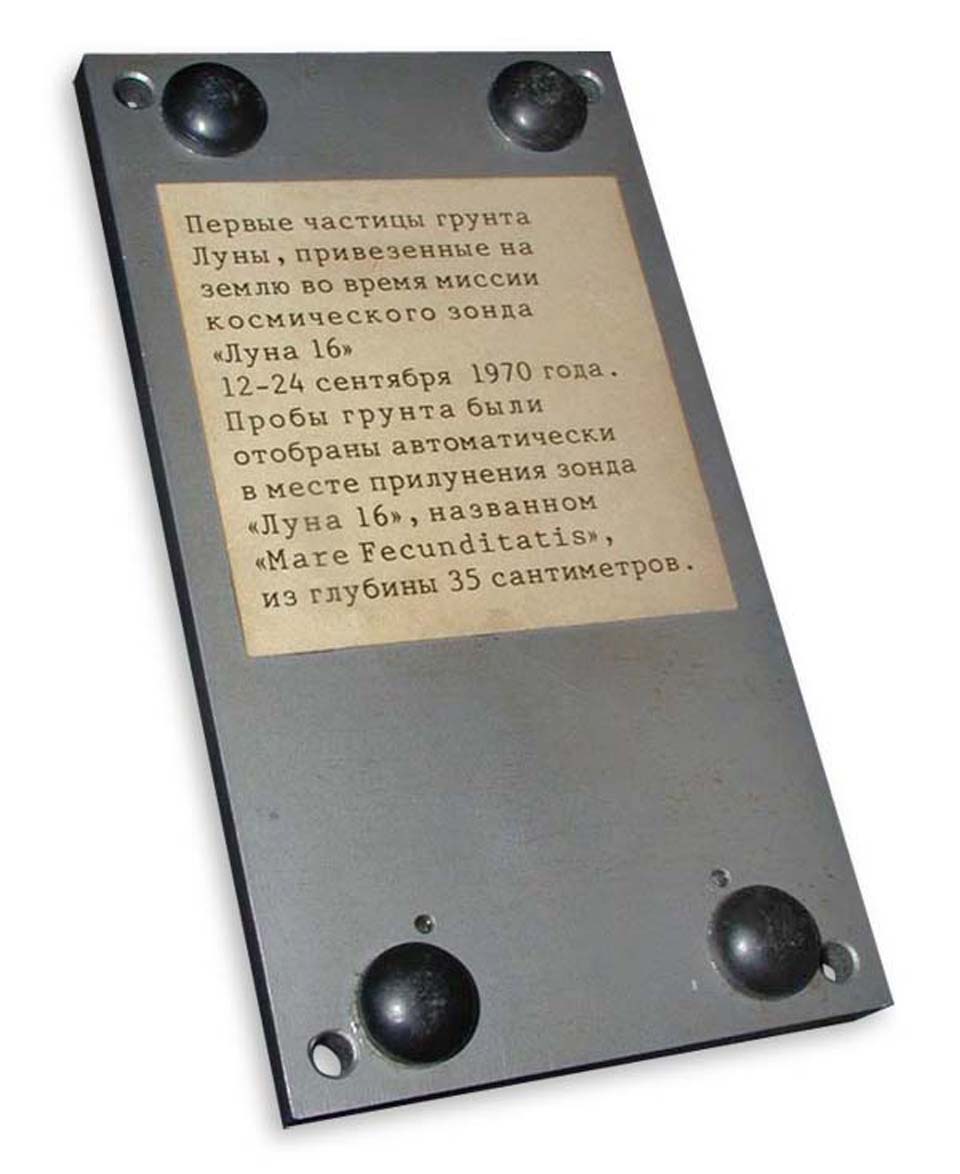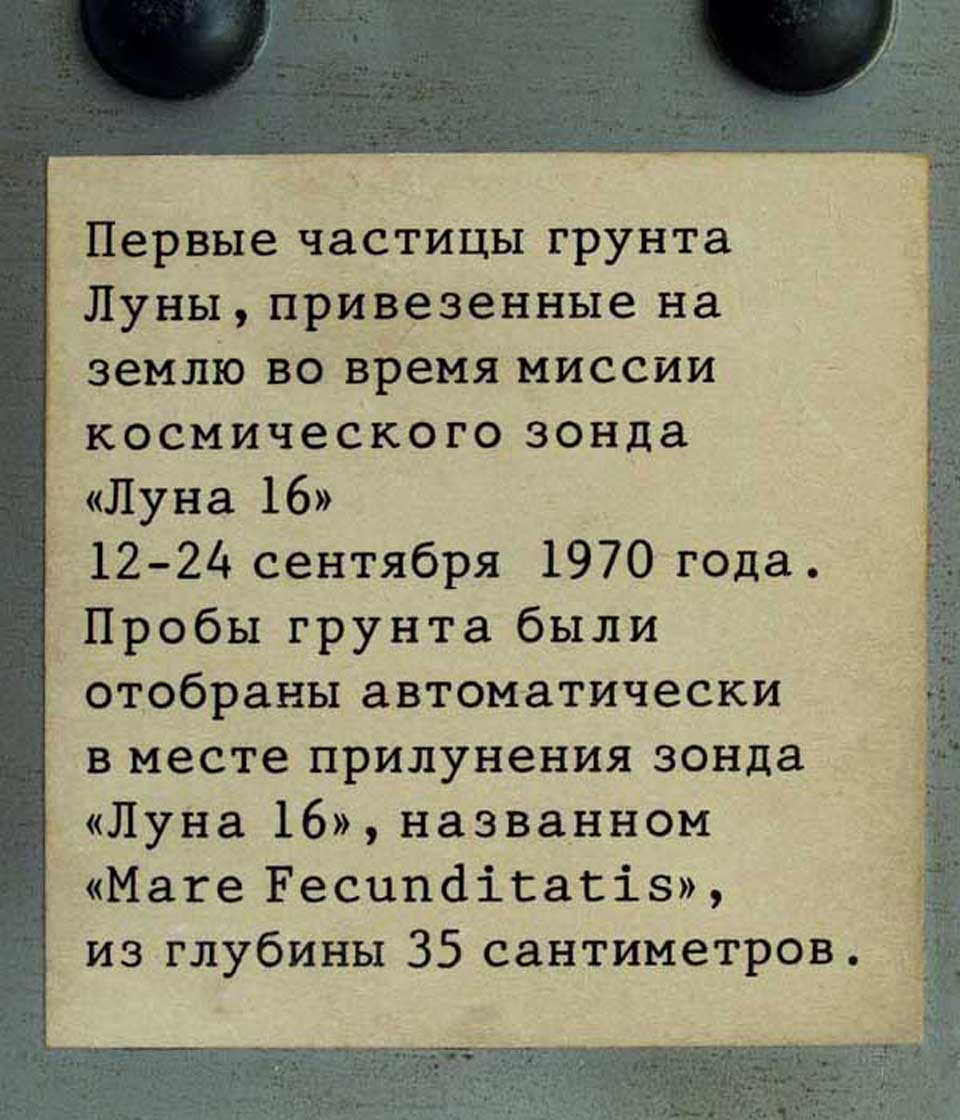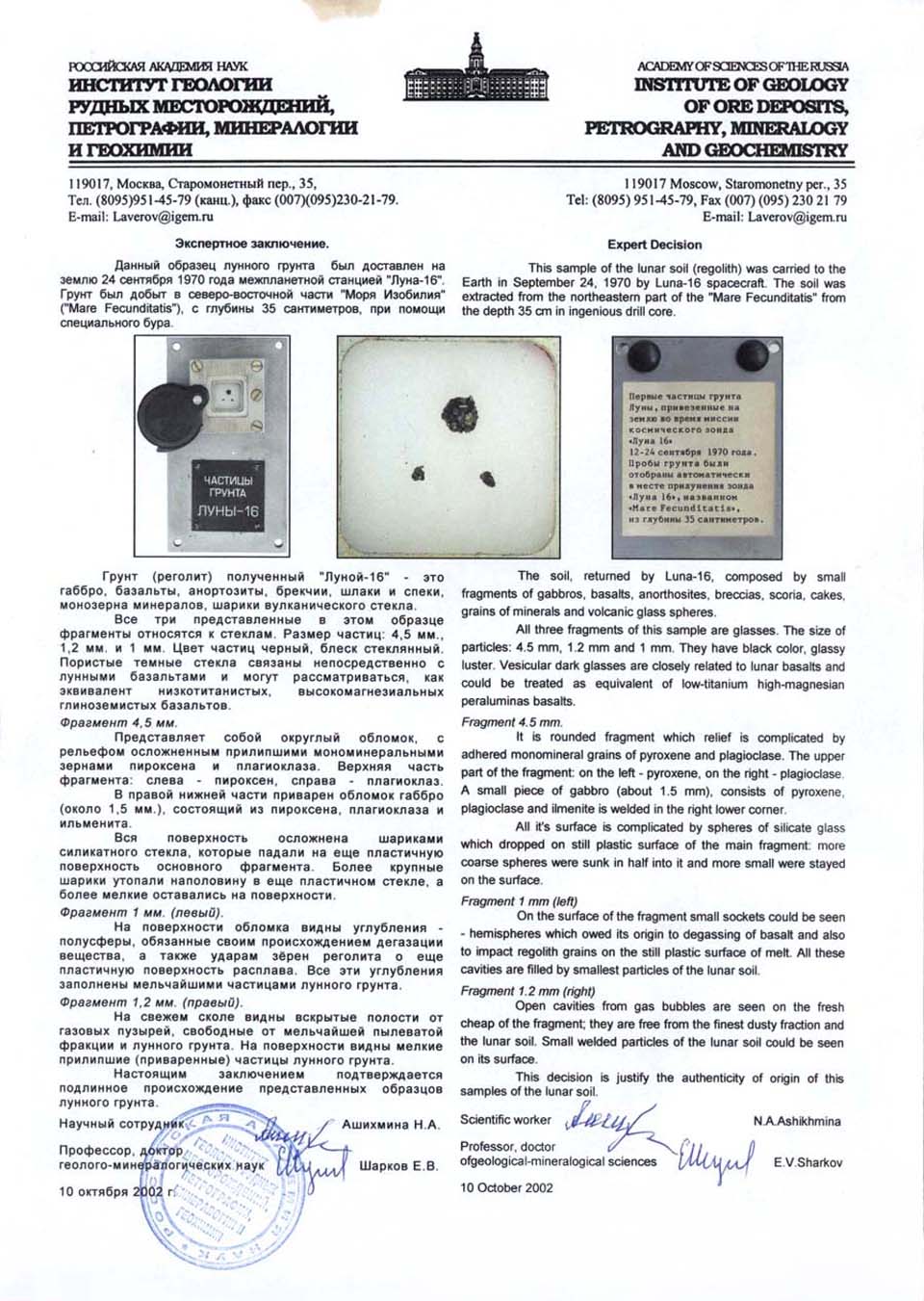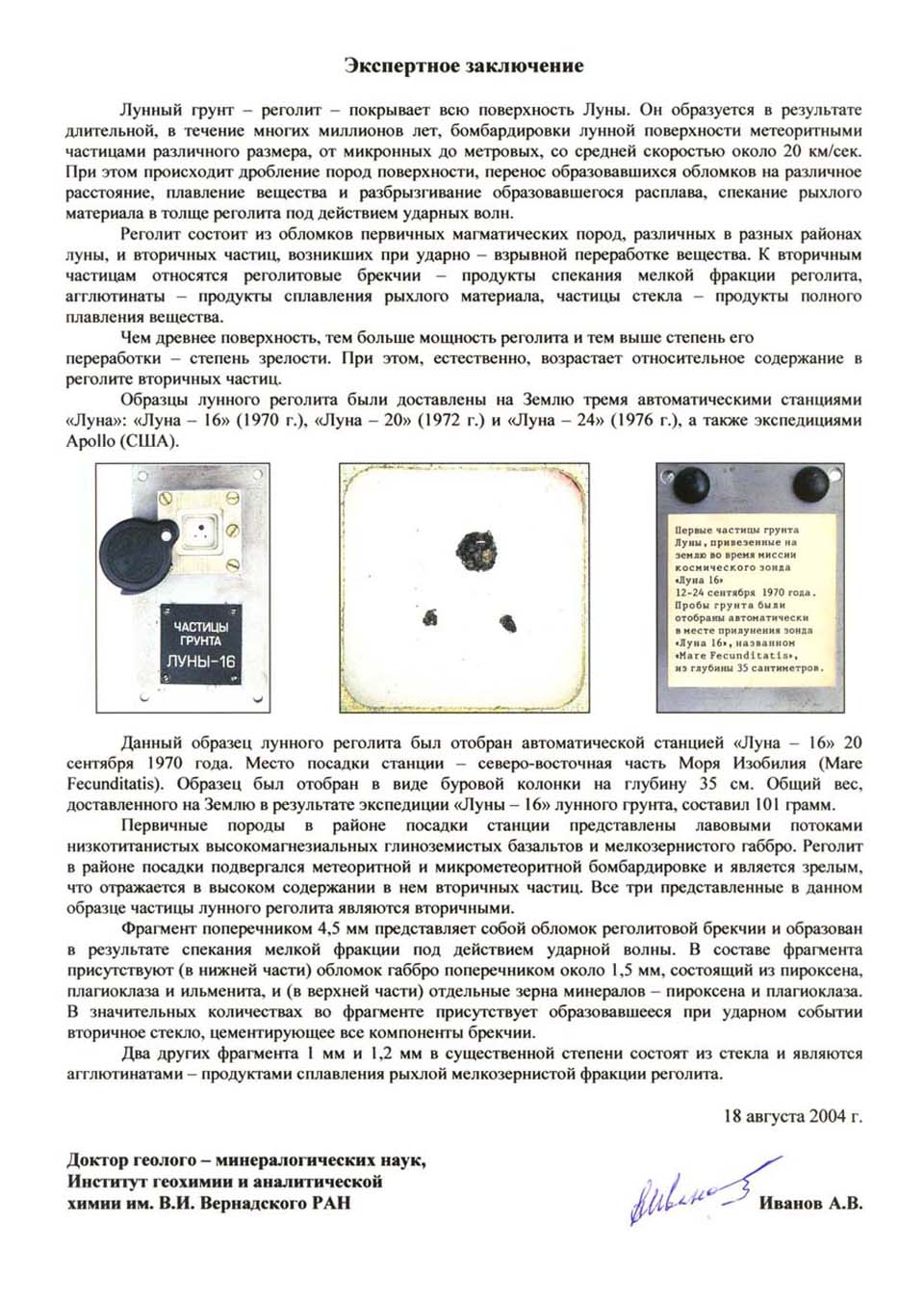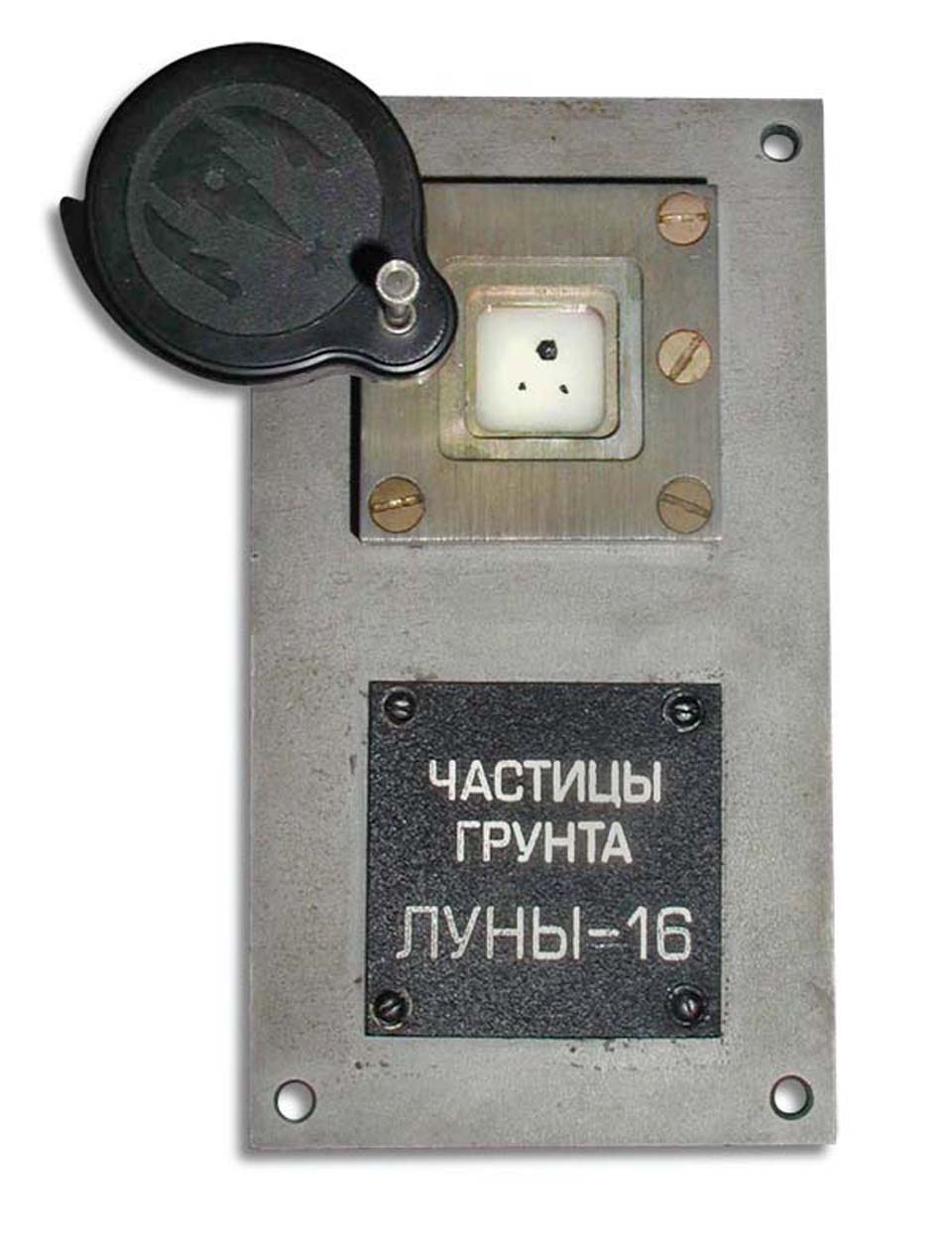
This singularly unique metal presentation viewer holds three tiny lunar regolith particles retrieved by the first completely successful Soviet automatic lunar lander Luna-16. Only 101 grams (3.56 ounces US) of the soil was drilled out on the Moon on this occasion in September 1970 from the depth of 35 centimeters (13.7 inches US) and delivered to the Earth.
Container description.
The container's base is comprised of thick rectangular metal plate, about 17.7 X 10.1 cm (approx. 7 x 4 inches US) size, along with rubber feet and an information paper label affixed to its bottom. The soil particles are displayed in the upper section of the base, under glass. This extraterrestrial display is anchored with its own metal frame. The frame is attached to the base with five screws. There is an adjustable magnifying glass (in its own plastic case) above the samples to allow more detailed views. The image of the well-known Moscow Kremlin Savior tower appears on the top of the magnifier's plastic case. Below the framed soil samples, there is an additional metal nameplate saying in Russian "Soil Particles of Luna-16"; this nameplate is attached to the base with four screws. The overall flat-metal base has four holes to fix it to a heavy support to prevent theft, if displayed in a public place. The typewritten Russian text on the paper label says: "The first particles of the Moon's soil, brought to Earth during the mission of the space probe Luna-16, September 12-24, 1970. Soil samples were taken automatically in the place of lunar landing of the probe Luna-16, titled 'Mare Fecunditatis' from the depth of 35 centimeters."
Provenance.
This container with three Luna-16 lunar soil regolith particles was originally presented to Mongolian leader Yumzhagiyn Tsedenbal in 1976 at one of the factories of the Soviet space industry where he was a guest accompanied by then Soviet leader Leonid Brezhnev. Tsedenbal was the General Secretary of the Central Committee of Mongolia from 1958 through 1984. He was widely supported by the Soviet government and held all the highest positions in Mongolian Republic until his expatriation in 1984. He escaped to Moscow together with his family. The new Mongolian rulers disenfranchised Tsedenbal and wanted the Soviets to deport him in Mongolia, but Soviet political authorities declined to take action. Living in Moscow, Tsedenbal kept some valuable things from his "previous" life. Among these mementoes of his time as Mongolia's top official, was this Luna-16 lunar soil presentation viewer. After Tsedenbal's death in April 1991, his Russian wife Anastasiya Filatova survived him in Russia and received a very small state pension. Eventually, she was forced to sell valuable household things including unique presents that belonged to the family. In 1993, this singular, unequalled Luna-16 lunar soil presentation viewer was certified with the appropriate institutions in Moscow.
Proof of genuineness.
The lunar soil regolith presentation viewer comes with the invaluable Certificates of Authenticity issued by the leading mineralogy and geochemistry institutes in Moscow, Russia, mentioned below.
- The COA in both Russian and English languages from the Institute of Geology of Ore Deposits, Petrography, Mineralogy and Geochemestry of Russian Academy of Sciences (signed by Professor Dr. E.Sharkov), Moscow, Russia.
- The COA in Russian language from the Institute of Geochemestry and Analytic Chemistry n.a. Vernadsky (signed by Dr. A.Ivanov), Moscow, Russia.
Legacy.
Identical three tiny samples of the Luna 16 soil, in absolutely the same container, were consigned to Sotheby's Russian Space History auction in New York by Nina Koroleva (the widow of Sergey Korolev) in 1993, where the container was sold for $442,500 (lot 68). This container appeared for sale again at Sotheby's Space Exploration auction on 29th of November 2018 (lot 63) where it was sold for $855,000.
|
CONDITION - excellent (please see the pictures).
 Made in USSR as a valuable gift to foreign country leaders and for space museums. Made in USSR as a valuable gift to foreign country leaders and for space museums.
|
|

